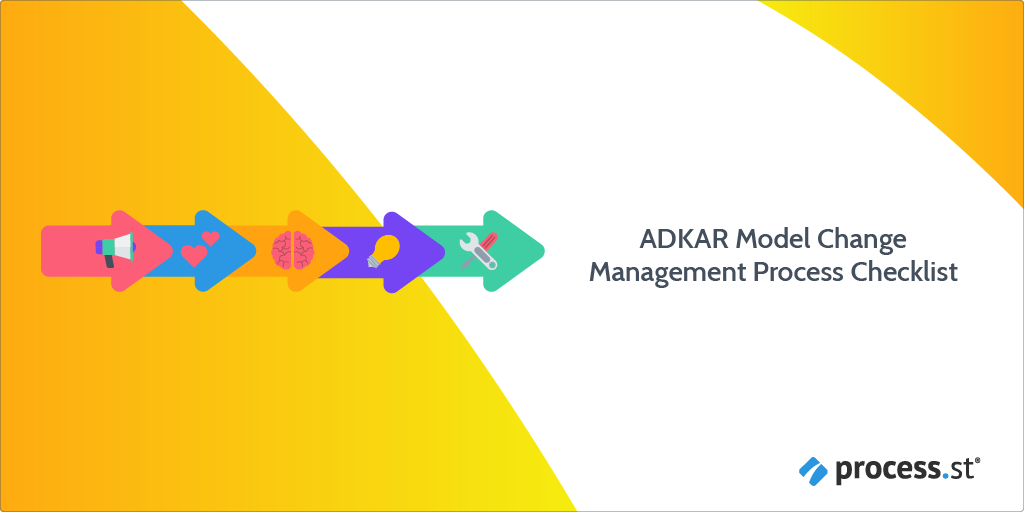ADKAR is an acronym standing for Awareness, Desire, Knowledge, Ability, and Reinforcement. It is a goal-oriented approach to managing change. Run this ADKAR Model Change Management Process Checklist to implement the ADKAR model and effectively manage change in your organization.
The ADKAR model: An introduction
The ADKAR model was developed by Jeffrey Hiatt, founder of Prosico, in 2003. The method takes a bottom-up approach, focusing on the individuals behind the change. Each letter in the acronym stands for the goal to be reached.:
- Awareness - to the need for change
- Desire - to participate and support the change
- Knowledge - on how to change
- Ability - to implement the required skills and behaviors
- Reinforcement - to sustain the change
By focusing on achieving these four goals, the AKDAR model effectively plans out change on both an individual and at an organizational level.
What's good about it
The ADKAR model takes a bottom-up approach for the management of change, focusing on the employees. Change is readily and reliably deployed, resulting in higher success rates by giving set goals to meet.
It is a flexible approach, targeting small incremental changes that are easier to deploy.
What's bad about it
The ADKAR model falls short when it comes to large-scale changes. Taking a bottom-up approach macro-management is ignored.
How to use this checklist
At the beginning of this checklist, you will be presented with a set of specialized questions given as form fields. You are required to populate each form field with your data.
This checklist is broken down into phases. Each phase is characterized by the targeted goal:
- Phase 1 - Awareness
- Phase 2 - Desire
- Phase 3 - Knowledge
- Phase 4 - Ability
- Phase 5 - Reinforcement
At the end of each phase, your supervisor/manager will review your work using Process Street's approvals feature. Other features used in this template include:
- Stop tasks - To ensure task order.
- Dynamic due dates - To make sure your initiative is reviewed on time.
- Role assignment - To delegate tasks within your team ensuring your supervisors is appropriately assigned to the review tasks.
- Approvals - Tasks can be accepted, rejected, and rejected with comments.






